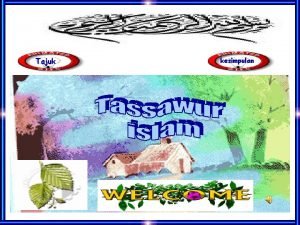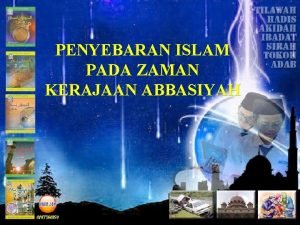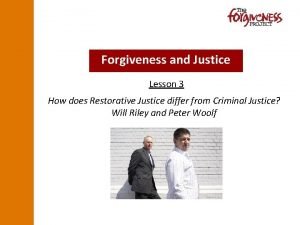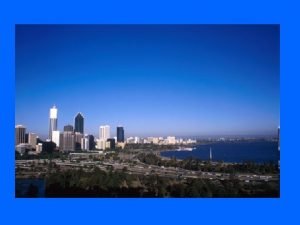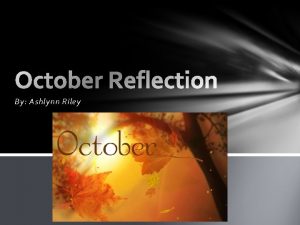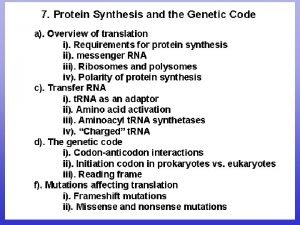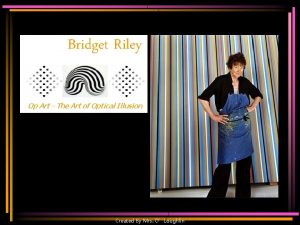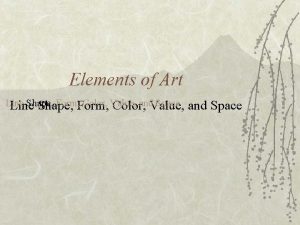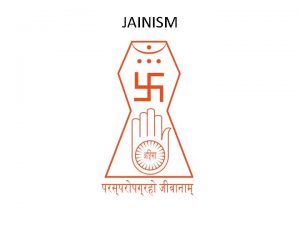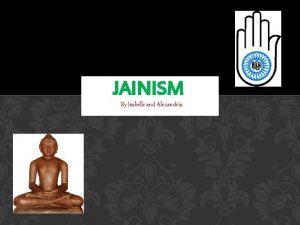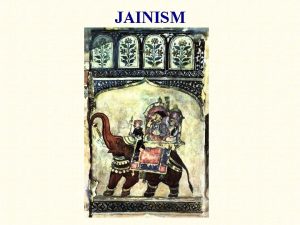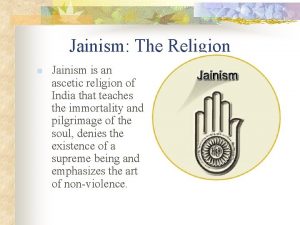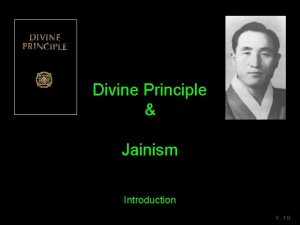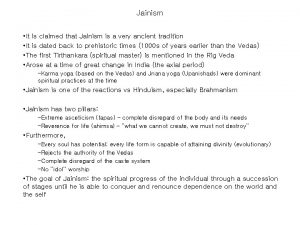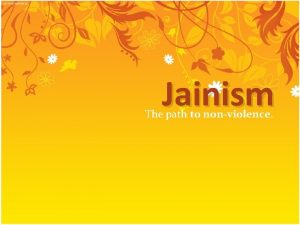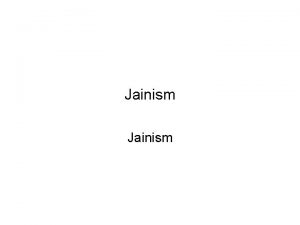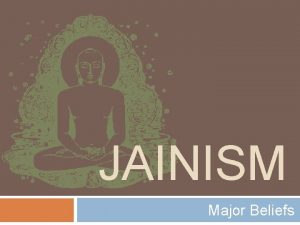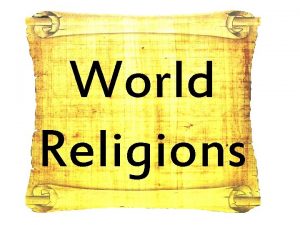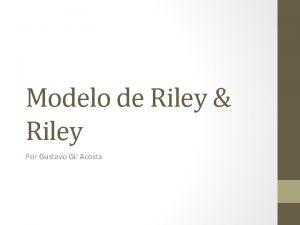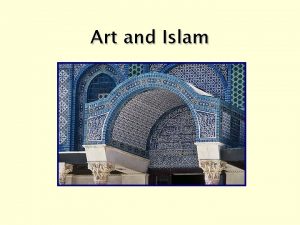Jainism and Islam Jainism O Riley pp 93

















- Slides: 17

Jainism and Islam

Jainism • O’ Riley, pp. 93 -95 • Fonder: Mahavira (“The Great Hero”) 599 -527 BCE • There are 24 tirthankaras, “Pathfiners. ”; they are known as jinas, “visits” or “Heroes. ” • Goals: break out of the life cycle by living pure lives; hope to perfect their jiva, “soul, ” or “high consciousness”

3. 31 The Ascetic Gommata, Karnataka, 10 th century (H: 18. 29 m)

3. 32 Jain Temple at Mount Abu, Rajasthan, 1031



Islamic Art and Architecture • • Islam religion 7 th century Monotheistic religion Muhammad was the founder Mecca (Saudi Arabia)--most sacred site where the kaaba is housed Koran--sacred text Five Pillar of Islam: Faith (There is no gods but God), prayer, fasting in the Ramadan, contribution to the Islamic community, pilgrim to Mecca. Two types of religious architecture: Mosque and Tomb O’Riley, pp. 95 -98

3. 33 Jahangir Seated on an Allegorical Thorne, Mughal, c. 1625

Shan Jahan

3. 34 Taj Mahal, Mughal, Agra, 1631 -1643

Taj Mahal • Taj Mahal (“Crown of the Palace”) is located in Agra • It was built as a tomb for Mumtaz Mahal (“Light of the palace”), Shan Jahan’s wife built between 1631 -1643 • Built of white marble and decorated with semi precious gems; motifs: floral, vegetation, geometric abstract motifs and calligraphy ( • It bulbous dome; pointed arches • Garden represents paradise

Islamic motifs • Prohibit figurative forms (architecture cannot be decorated with human or animal figures • Allows Geometric, abstract, floral and vegetation motifs • Arabesques-complex geometric patterns and scrolling vines • Calligraphy-drawn from the Koran • Rugs • Garden represents paradise-water, trees, and flowers with variety of scents and colors





 Riley ve riley iletişim modeli
Riley ve riley iletişim modeli Pengertian perundangan islam
Pengertian perundangan islam Matlamat sistem perundangan islam
Matlamat sistem perundangan islam Nirleka berasal dari perkataan
Nirleka berasal dari perkataan Peter woolf restorative justice
Peter woolf restorative justice Riley rink schedule
Riley rink schedule Rayleigh scattering formula
Rayleigh scattering formula Fresno state personal statement
Fresno state personal statement Thad riley
Thad riley Riley vs california
Riley vs california Riley stee
Riley stee Nicola riley
Nicola riley Riley-day syndrome
Riley-day syndrome Justin luke riley
Justin luke riley Riley e dunlap
Riley e dunlap Bridget riley cataract 3 1967
Bridget riley cataract 3 1967 Bridget riley descending
Bridget riley descending Bridget riley
Bridget riley


